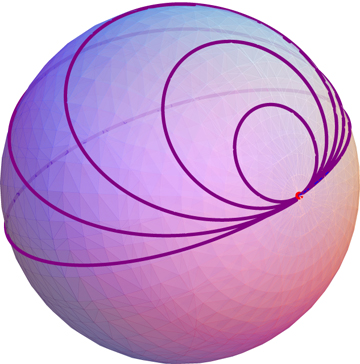It is not difficult to see that the curves of constant geodesic curvature on a geometric sphere
are all circles: simple, closed curves that are geometric circles lying in a plane:

My question is:
Q. What are the curves of constant (positive) geodesic curvature on an ellipsoid?
Earlier Dmitri Panov asked a more general MO question, "Curves of constant curvature on $S^2$." My question is more specific. I would be interested to know how large is the class of simple (non-self-intersecting), closed, constant-curvature curves on an ellipsoid, whether there are nonsimple closed curves, whether there are infinitely long curves, etc. Dmitri's question revealed that many general questions are open, but perhaps there has been a special study made of the ellipsoid? I have so far not found any literature specifically on this. Thanks for pointers!
Addendum. I've made a few experiments which suggest that simple,
closed curves of constant curvature might not be uncommon. My calculations were incorrect---Sorry to mislead!
Further edit. I've now rewritten the calculations, which (I think!) are now correct within
numerical accuracy. Here is a portion of a
(non-simple) constant-curvature curve on the
ellipsoid $\frac{x^2}{2^2}+y^2+z^2=1$:

